Communication Theories and Models: Aristotle, Lasswell, Shannon, and More
1/9
There's no tags or description
Looks like no tags are added yet.
Name | Mastery | Learn | Test | Matching | Spaced |
|---|
No study sessions yet.
10 Terms
corax and tisias
The first theorists
-created the 1st persuasive speaking model
-intro,body,conclusion
aristotle
-created the rheotoric
-the books of ethos, pathos, logos needed for persuasion
-speaker-argument-speech-listeners (audience)
-speaker =ethos are they credible or not
-pathos (listener) wanting to evoke emotions

laswells model 1948
-channel and effect added to aristotles model
-channel is mass media, tv, art,print, radio
-WHO is saying WHAT in WHICH to WHOM and WITH WHAT EFFECT
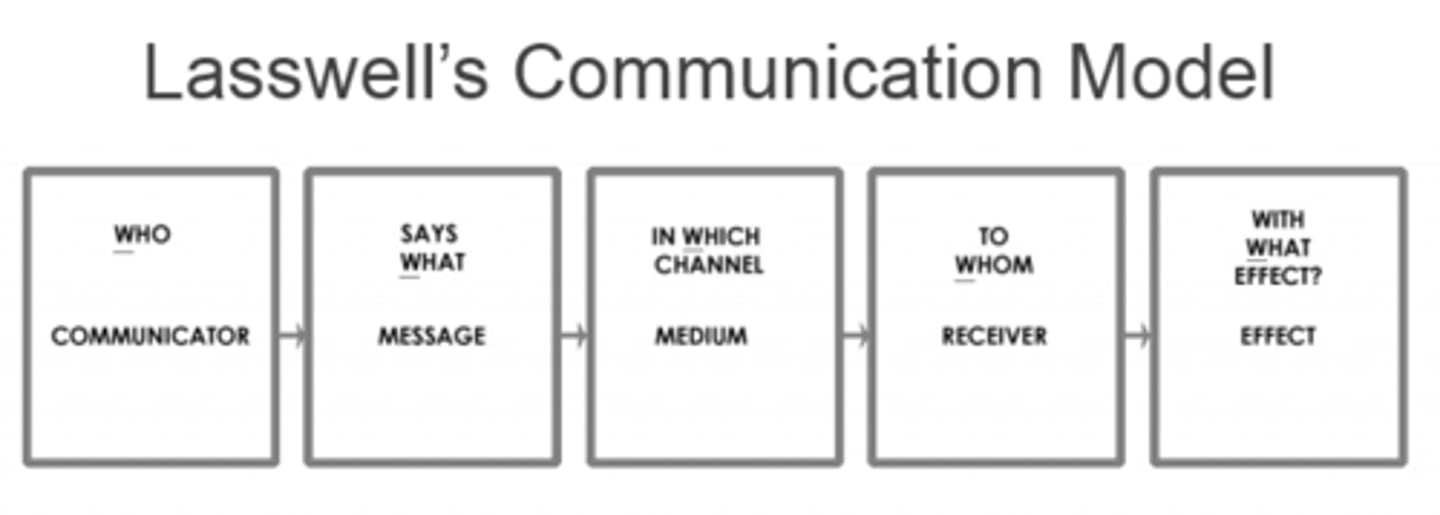
Shannon and Weavers Model 1949
-info source - transmitter - channel - reciever - destination
-transmitter=antenna, technological device
-info source=art, music, text, facial expressions, dance
-channel = airwaves, wires, has noise sometimes
-correctional channel how to fix the noise
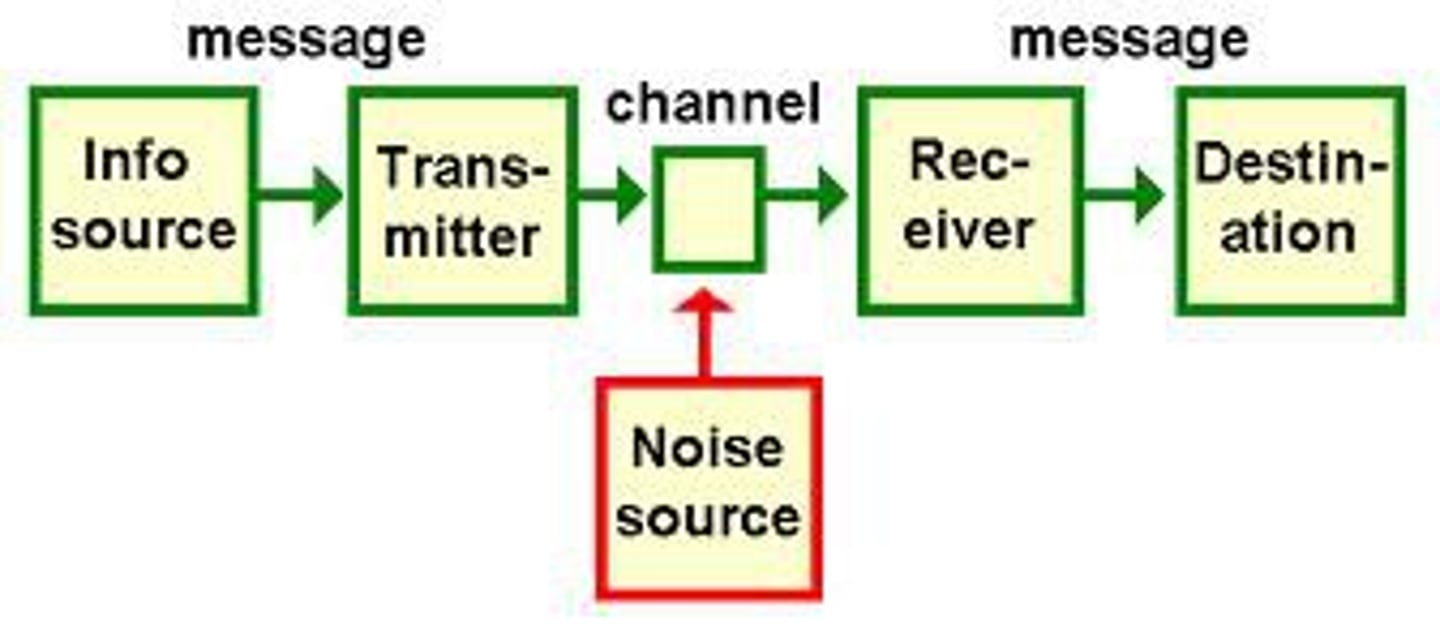
Schramm's Model (1954)
-field of experience between the sender and receiver;
-venn diagram
-back and forth communication about shared experiences, values, culture
-people are both senders, and receivers
-established importance of feedback
-giving constant feedback to one another

Katz and Lazarsfield 1955
-two step flow process
-source-message-mass media-opinion leaders-public
-political messages being conveyed to the public by opinion leaders
-opinion leaders are anyone who watches or has knowledge of the topic
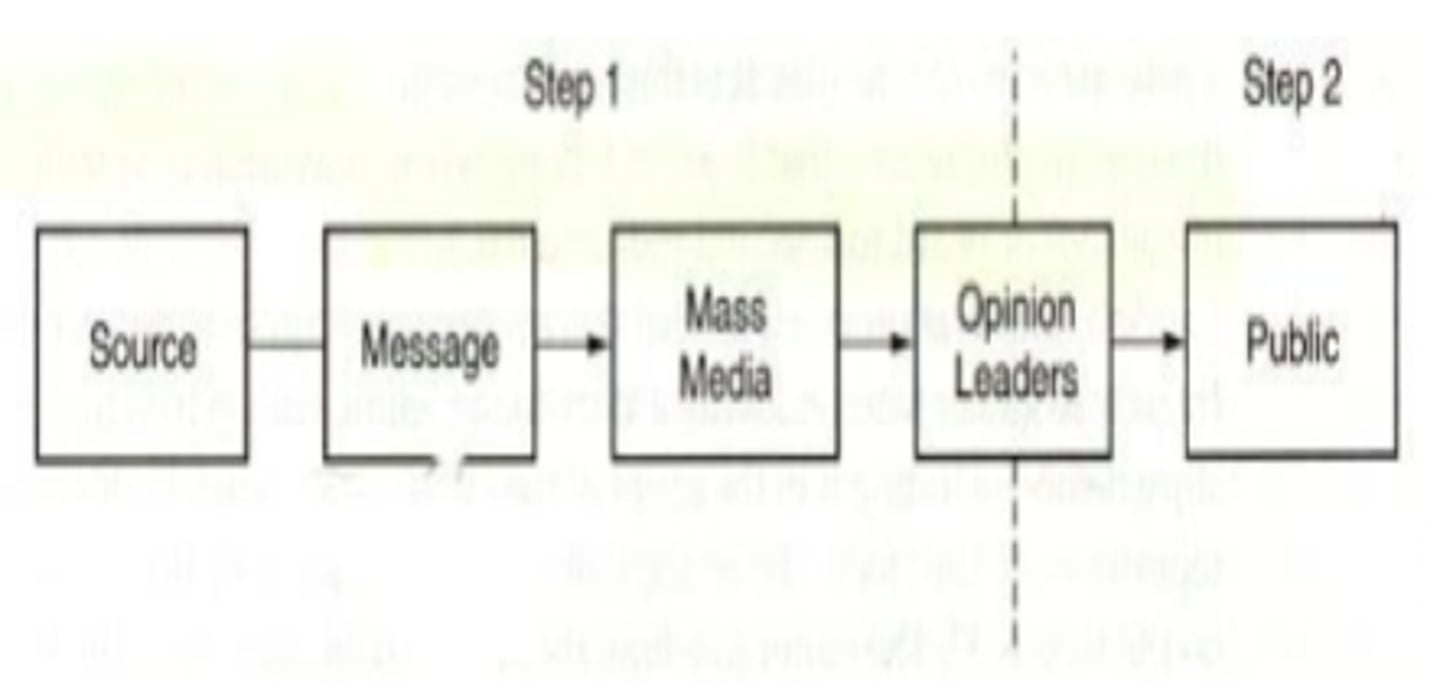
Westley and Mcleans 1957
-infinity sign symbol
-process begins with the senders environmental factors that influenced them
-begins with receiving messages from outside factors
-outside influences-reciever-channel-audience
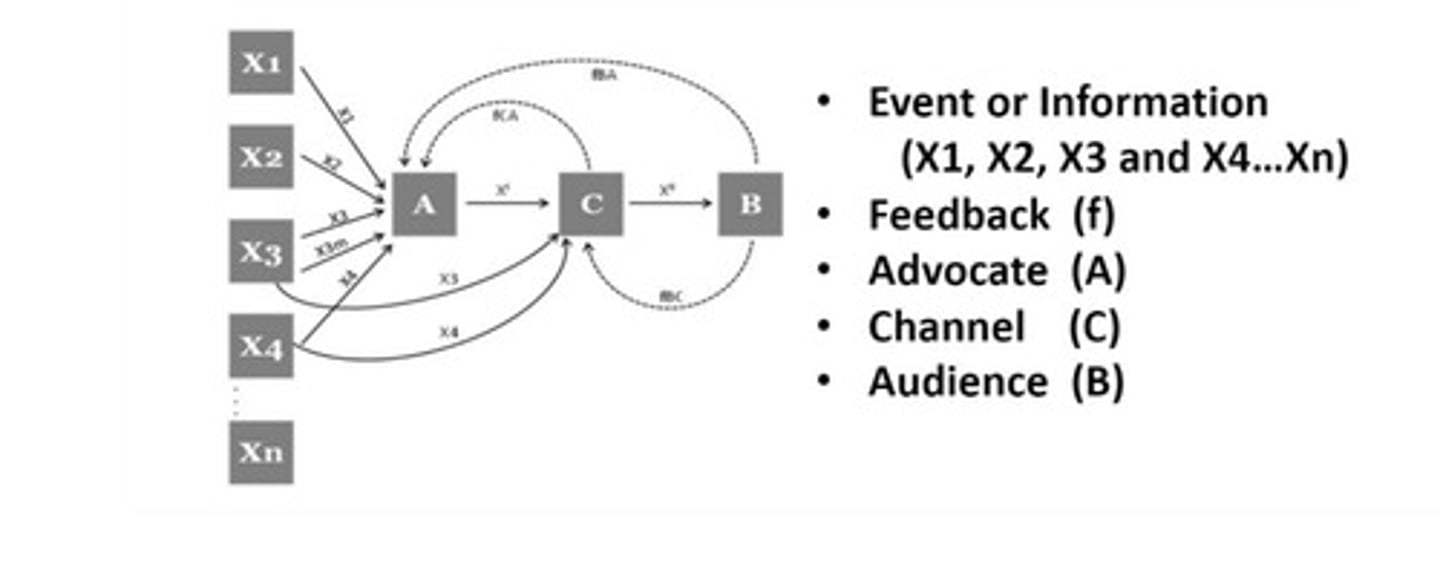
Dances model
-Tornado like Model of Communication
-each communicative actions builds on the previous one
-evolutionary process that takes time
-shows how time effects relationships
-interpersonal relationships
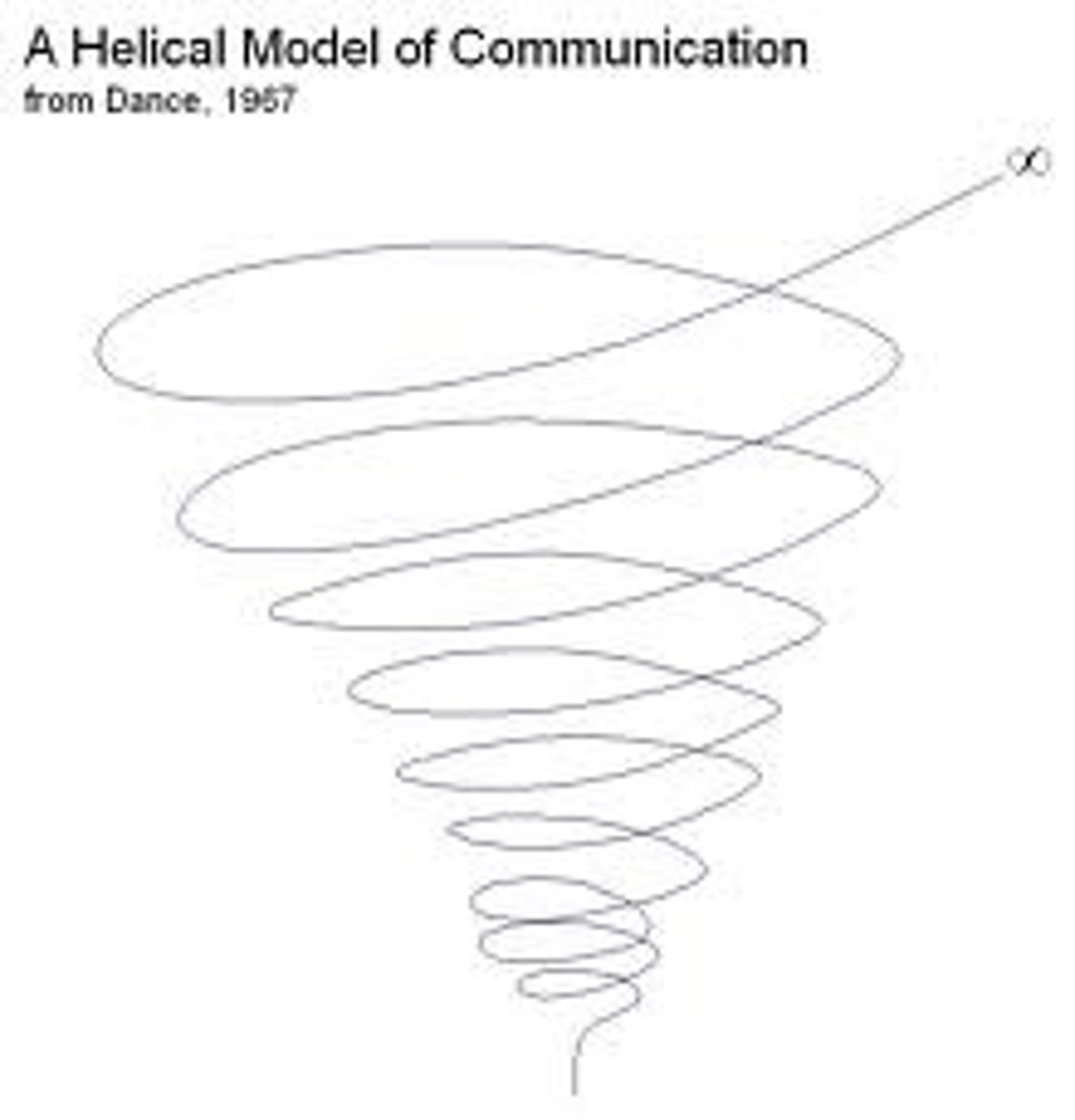
Watzlawick Beavin and Jacksons Model 1967
-one cannot not communicate
-we are always sending a message
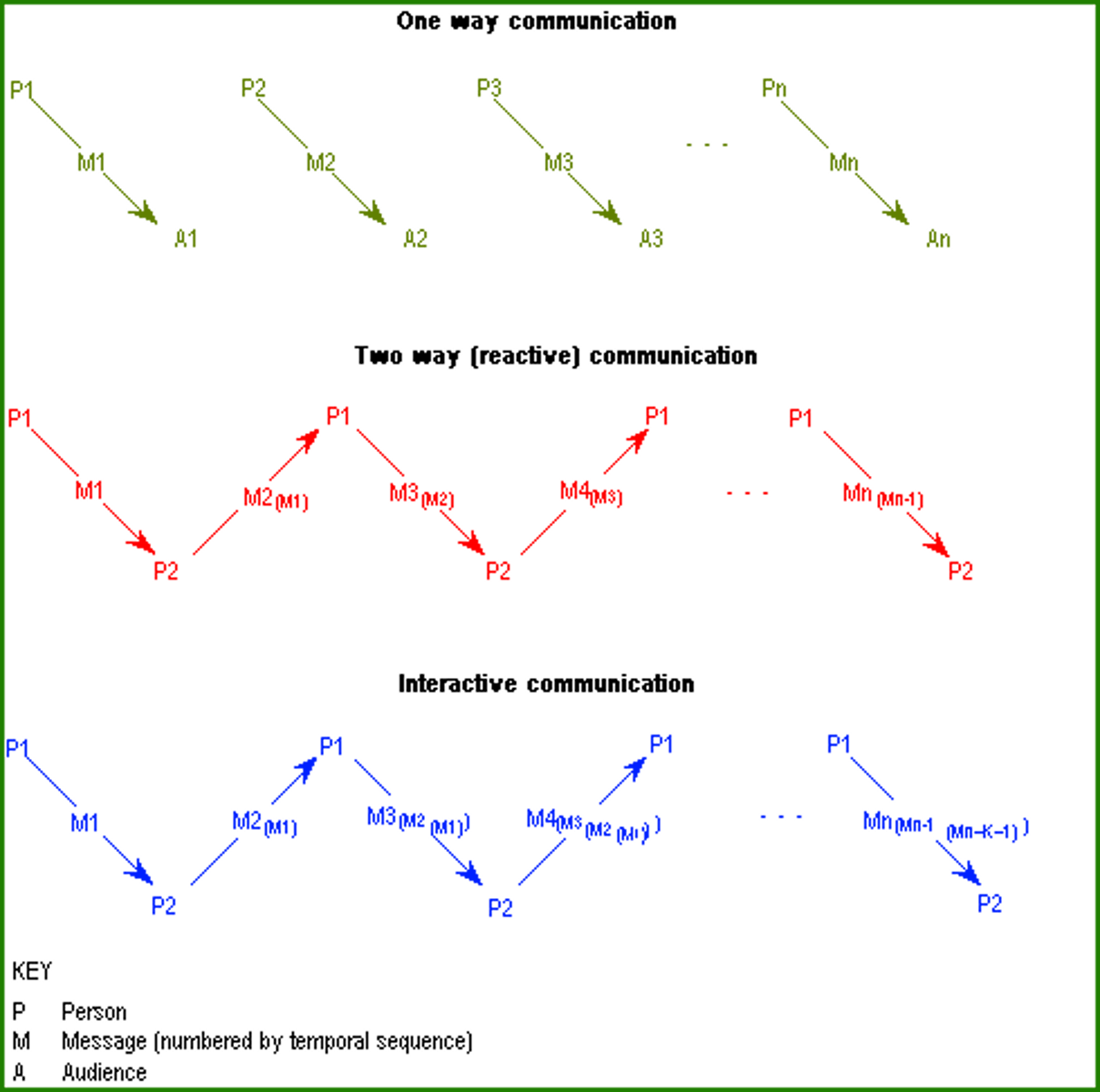
Thayer's Model 1968
-personalized communication
-the message a reciever acquires is never identical to the one the source emits